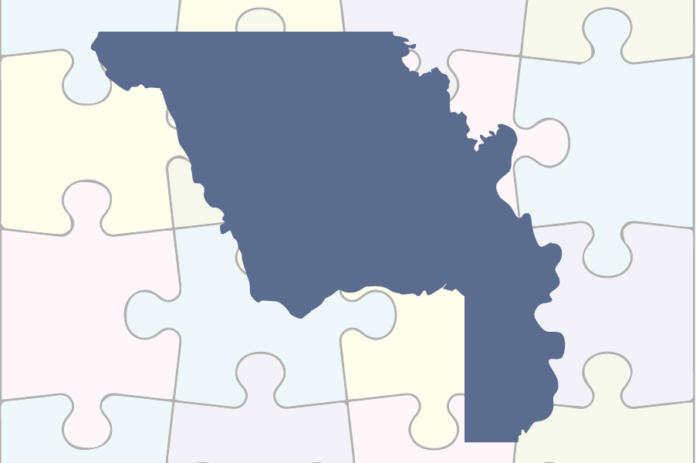The first district map drafts were presented at city council in the third hearing out of five concerning city district boundaries
By LEVI GOLDSTEIN — city@theaggie.org
Every ten years, it is required by federal law that voting districts are redrawn to reflect the population data gathered by the Census. Districts with well-balanced population numbers ensure that every elected representative has an equal number of voters, and that voters have equal representation and voting power.
The City of Davis is currently undergoing the redistricting process for city council member voting districts.
On Tuesday, Jan. 11, the first official draft maps for new city district boundaries were brought to the Davis city council. This was the third public hearing in a series of five that began in Nov. 2021. The final hearing is scheduled for Tuesday, Feb. 15, during which the council will vote to officially adopt the final district map.
According to Assistant City Manager with the City of Davis Kelly Stachowitz, the city converted to a district election system in 2019, based on districts that were drawn according to 2010 Census data.
The council must approve maps that reflect changes in population between the 2010 Census and the 2020 Census. For the maps to be viable, the population difference between the districts with the smallest and largest populations cannot deviate from the target (the total city population divided by the number of districts) by more than 10%.
“We have to make sure that it works with population numbers,” Stachowitz said. “If you add to one district in one place, you may have to take away someplace else from the district in order to keep the districts relatively even. It’s just kind of a puzzle that you have to put together.”
City council has been meeting with Redistricting Partners, a contracting firm that aids in the redistricting process. Their purpose is “to make sure that the population numbers […] are meeting both the spirit and the intent of the law,” according to Stachowitz.
Paul Mitchell, a data consultant and Redistricting Partners’ owner, said during the city council hearing on Jan. 11 that in addition to equal population sizes, districts must be contiguous, keep communities of interest together, follow designated geographic boundaries such as highways and remain compact.
A community of interest is a “contiguous population that shares common social and economic interests,” according to the city’s redistricting website.
The city council has paid special attention to protecting communities of interest, including communities of renters versus homeowners, minority communities and specific neighborhoods.
“We want to make sure that if there was a community of interest […] we put that community of interest in one district so that they’ll have a larger percentage of the voice, versus spreading them throughout two or three districts where their voice might be diluted,” Stachowitz said.
The city has provided various opportunities for public input during the process, including a public workshop on Dec. 13, 2021, a community of interest survey that closed Dec. 31, time allotted for public comment during hearings and an email address (districts@cityofdavis.org) to which residents can send comments and submit draft maps for consideration.
Most of the input the city has received is from residents of Aggie Village, a neighborhood in Davis that is considered a community of interest. Aggie Village is currently zoned in District 5, which consists of South Davis, Olive Drive and a small piece of downtown.
“What they said was, ‘We believe that we are much more closely aligned in our needs and our interests and our issues with other downtown residents, and we believe that we should be in a district with those residents, rather than where we are currently,’” Stachowitz said. “Both option A and option B of the draft maps […] do take into consideration that input and include that neighborhood with the downtown area that they requested to be in.”
City council also considers the direct effects of redistricting on Davis residents when discussing draft maps. The main impact they’re concerned about is a result of staggered council member elections. Three out of five districts voted in Nov. 2020, before redistricting, and the remaining two will vote in Nov. 2022, with voters zoned based on the new district maps that will be approved this year.
Staggered elections are beneficial to the city because they allow for continuity on the council, according to Stachowitz. However, because some voters will change districts between elections, they could end up voting twice, or not at all.
“‘Accelerated’ means that you voted in the last election but then your district got changed around and you’re actually going to vote again in the next election,” Stachowitz said. “The other way would be ‘deferred’, which is the exact opposite. It means that you didn’t vote in the last election but then your district was changed and wherever you are now is also not voting in the current election.”
Stachowitz said that the city council will try their best to limit the number of voters that are deferred.
The redistricting process is going smoothly thus far. However, one concern that was discussed during the hearing on Jan. 11 is that the city’s version of the city boundary lines don’t match up with the county’s version. Plans for the city’s Mapping and Geographic Information Systems staff to meet with Yolo County to discuss those inconsistencies and create a synced map based on taxpayer records should solve that issue. For now, it is causing a delay in the drafting process.
The final district draft maps will be released on Jan. 25. The fourth city council hearing is on Feb. 1. The finalized maps will be released on Feb. 8, which will be voted on at the final hearing on Feb. 15.
Written by: Levi Goldstein — city@theaggie.org




